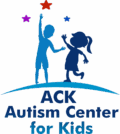Non-ABA Autism Therapy-If you’ve ever searched for “autism therapy services near me,” chances are you’ve come across ABA therapy more times than you can count. Applied Behavior Analysis (ABA) has long been the dominant approach in autism therapy. But for many parents, especially those seeking more naturalistic, child-led, and trauma-informed options, ABA doesn’t always feel like the right fit.
Thank you for reading this post, don't forget to subscribe!The good news? A growing movement of therapists and parents are embracing non-ABA autism therapy options that focus on relationship-building, emotional development, and individualized learning. In this article, we’ll explore the rise of non-ABA autism therapy, why families are making the switch, and how to find an approach that fits your child’s unique needs.

What Is Non-ABA Autism Therapy?
Non-ABA autism therapies are approaches that don’t follow the traditional behaviorist model of reinforcement and compliance. Instead, they often prioritize the child’s emotional regulation, communication, autonomy, and relationships with caregivers.
These models include:
- Child-led play therapy
- Developmental, Relationship-Based Models (DIR/Floortime)
- The Miller Method
- Relationship Development Intervention (RDI)
- Sensory Integration Therapy
- Trauma-Informed Therapy
Each of these focuses on meeting the child where they are and building skills through connection and trust, not just behavior modification.
Why Parents Are Moving Away from ABA
ABA can be highly structured and goal-oriented, which works for some—but not all—children. Common concerns from parents and autistic adults include:
- Overemphasis on compliance over autonomy
- Lack of focus on emotional well-being
- Stress and trauma from rigid, repetitive sessions
- Disregard for the child’s sensory needs
In contrast, non-ABA therapies emphasize understanding why a child behaves a certain way instead of simply trying to change the behavior.
Understanding the Alternatives
1. Child-Led Play Therapy
This approach lets the child take the lead during sessions, allowing therapists to enter their world through preferred activities. It encourages engagement, reduces resistance, and builds rapport naturally.
2. DIR/Floortime
Developed by Dr. Stanley Greenspan, DIR (Developmental, Individual-differences, Relationship-based) is about following the child’s lead and using play to support social, emotional, and cognitive growth.
3. Miller Method
This method helps children use structured, meaningful experiences to build functional behavior and communication. It blends routines and real-world concepts to increase independence.
4. Sensory Integration Therapy
Helps children who are hypersensitive or hyposensitive to sensory input (touch, sound, movement) by improving their ability to process and respond to stimuli.
5. Trauma-Informed Therapy
Recognizes that some children may have adverse early experiences or medical trauma, and it works at a pace that prioritizes safety, trust, and emotional healing.
ABA vs Non-ABA: A Side-by-Side Comparison
| Aspect | ABA Therapy | Non-ABA Therapy |
|---|---|---|
| Structure | Highly structured and adult-led | Flexible and child-led |
| Focus | Behavior modification | Emotional growth and communication |
| Techniques | Rewards, prompts, data collection | Relationship-building, play, co-regulation |
| Sensory Needs | Often overlooked | Integrated and prioritized |
| View of Autism | Focus on reducing “problem” behaviors | Acceptance, neurodiversity-affirming |
How to Choose the Right Non-ABA Therapy
When considering “non-ABA autism therapy services near me,” keep the following in mind:
- Assess your child’s needs: Are sensory issues present? Do they struggle with transitions or emotional regulation?
- Consider your values: Do you want an approach that centers your child’s voice and autonomy?
- Talk to providers: Ask about their methods, training, and how they tailor sessions.
- Trial and adjust: Not every approach will be a perfect fit—don’t be afraid to pivot if needed.
Tikvah Family Services and autism center for kids: Offering Child-Led, Non-ABA Options
At Tikvah Family Services, we believe every child deserves a therapeutic approach that honors their individuality and dignity. We offer:
- Play-based therapy
- Parent-child interactive therapy
- Trauma-informed care
- Speech and communication support
All without relying on the rigid structure of ABA.
Our therapists in Oakville and Vaughan are trained in evidence-based, relationship-first models that work in harmony with each child’s development and strengths.
Final Thoughts
Parents are becoming more empowered to choose what feels right for their child. Non-ABA autism therapy options are expanding, with growing evidence that these relationship-focused methods lead to long-term developmental success.
If you’re looking for “autism therapy services near me” and want a gentle, respectful, and empowering alternative to ABA, consider a non-ABA path.
Your child’s journey should start with connection, not correction.
Ready to explore non-ABA autism therapy in Vaughan or Oakville?
Contact Tikvah Family Services today to learn how we can support your child with compassion and expertise.
Discover more from Autism Services and therapy for Kids by counseling
Subscribe to get the latest posts sent to your email.


You must be logged in to post a comment.